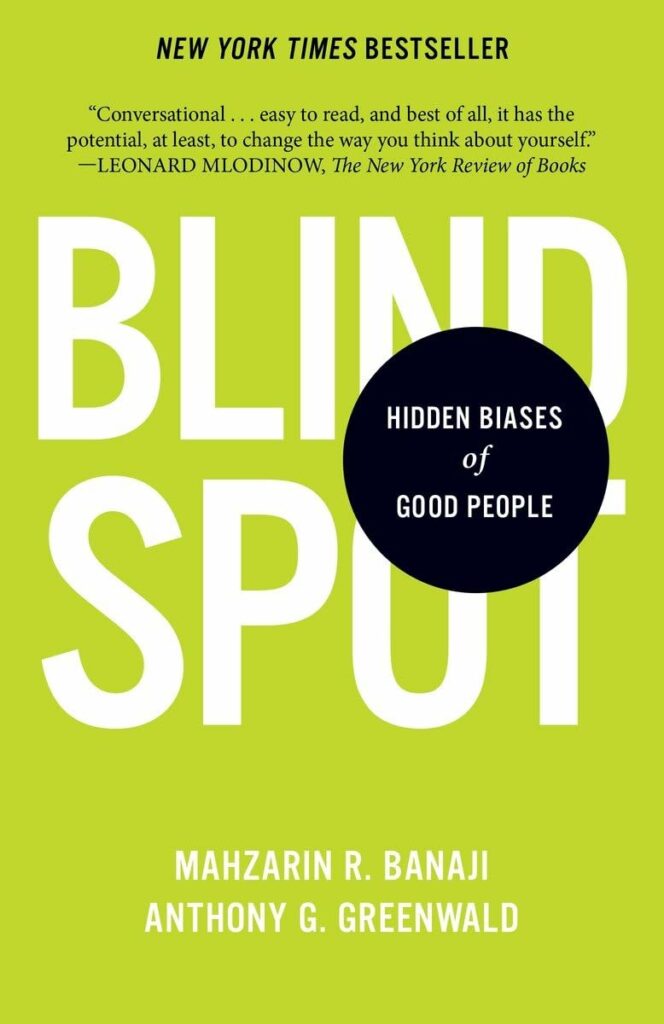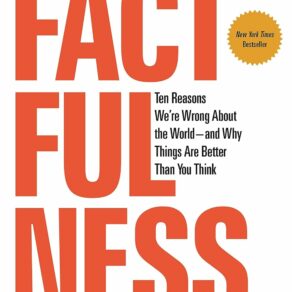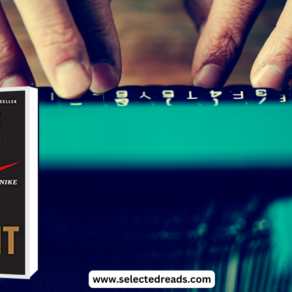Today, I’m sharing an extended summary and discussion questions on the book “Blindspot: Hidden Biases of Good People” by Mahzarin Banaji and Anthony Greenwald. This book is a rollercoaster ride through the labyrinth of our subconscious mind, exploring the biases we didn’t even know we had. As an educator, I find the insights from this book to be eye-opening and incredibly relevant for anyone in education or just dealing with human interactions.
Whether you’re an educator, a parent, or someone intrigued by the hidden machinations of the human psyche, this book and the accompanying discussion should give you plenty to think about. What makes “Blindspot” unique is its focus on the Implicit Association Test (IAT), a tool designed to unearth those biases that lurk in the corners of our minds, often affecting our decisions and interactions in ways we can’t easily see.
And if this piques your interest, read on! I’ve got a whole collection of books on implicit and unconscious bias that you’ll definitely want to check out.
Blindspot Book Summary
“Blindspot: Hidden Biases of Good People” by Mahzarin Banaji and Anthony Greenwald is a must-read for anyone invested in education and personal development, like me. The book serves as a mirror, reflecting not just societal biases, but the biases we all carry within us, often unbeknownst to ourselves. The authors delve into the complexity of hidden biases and offer actionable advice, making it an invaluable resource for educators, parents, and pretty much anyone engaged in interpersonal relationships.
The cornerstone of the book is the Implicit Association Test (IAT), a psychological tool designed to reveal hidden biases. The IAT isn’t just a simple quiz; it’s backed by rigorous research and offers compelling insights into how our minds work. I have found that understanding the principles behind IAT can bring a significant shift in the classroom dynamic. Imagine designing educational interventions informed by such deep-rooted psychological concepts. I’ve often thought that the education system would be more effective if it were aligned with how the human mind genuinely works.
What struck me most was the idea that stereotypes, even if we denounce them, can be deeply ingrained in our subconscious. We don’t merely hold biases against people from different groups; we also have biases that favor our own group. This “in-group favoritism” is evident in various settings—workplaces, schools, and even casual social gatherings. In my years in the classroom and educational research, this topic often popped up, whether it was preferential treatment based on academic performance, social background, or even subtler things like learning styles.
The book talks about the unsettling concept of dissociation, where our minds can hold contradictory ideas simultaneously. It’s like believing in equal opportunities but subconsciously favoring one group over another during admissions or grading. The IAT comes into play here again, revealing these dissonant threads in our thought processes. This concept will likely resonate with anyone who has engaged in complex classroom discussions or educational policymaking.
Acknowledging one’s biases can be uncomfortable but is crucial for genuine self-awareness. This is not merely an intellectual exercise; it has practical implications. For example, if a teacher is aware of their biases, they can actively work to ensure that their teaching methods, assessments, and interactions with students are fair and equitable. For parents and educators looking for actionable strategies, the book doesn’t disappoint. It emphasizes the importance of self-improvement and how individuals can take steps to address these biases, both in personal and professional settings.
Though some critics find the book repetitive, especially concerning its focus on the IAT, I find that the repetition serves to underscore the gravity of the issue. Addressing hidden biases isn’t a one-and-done deal; it’s an ongoing process, something that we have to continually reflect upon and strive to improve. The book encourages us to reflect on our own biases actively, urging us to foster inclusivity and a sense of belonging in our interactions.
Overall, “Blindspot” serves as both a lens and a mirror, making us look at society and ourselves in new, sometimes uncomfortable, ways. Whether you’re teaching, parenting, or just living in this complex world, the book offers invaluable insights that I believe can drive real change. For those interested in digging deeper into the psychology of biases, I’d recommend pairing this book with Daniel Kahneman’s “Thinking, Fast and Slow,” which also delves into the intricacies of unconscious biases and decision-making.
So, there you have it—an eye-opening read that I think would offer anyone in the educational field a fresh perspective on how we think, judge, and act. It certainly has made me rethink how I approach my research and teaching strategies, not just theoretically but in practical, tangible ways.
Blindspot Discussion Questions
Creating discussion questions for a book like “Blindspot: Hidden Biases of Good People” is a great way to explore its themes more deeply. Whether you’re considering these questions for a book club, a professional development session with educators, or even for reflective posts on your blog, these prompts can help spur meaningful conversations.
- The IAT as a Tool: How reliable do you find the Implicit Association Test (IAT) in uncovering biases? Does your experience in educational studies and research lend credibility or skepticism to such psychological testing?
- Stereo-types in Classrooms: How do ingrained stereotypes affect our actions in educational settings? Are there any personal experiences you can share where recognizing these stereotypes has made a difference in your teaching?
- Impact of Dissociation: Can you think of a time when you held two contradictory ideas, particularly in your educational practice? How did becoming aware of this dissonance impact your approach?
- Unsettling Awareness: After learning about your hidden biases, how would you channel this awareness towards combating discrimination in educational settings?
- Real-life Biases in Decision-making: Share an example of a time when hidden bias might have influenced your decisions, either in the classroom or in educational research. How did you address it?
- In-Group Favoritism: Have you observed instances of in-group favoritism in your professional setting? How can this be mitigated in educational contexts?
- Ongoing Self-Improvement: What actionable steps can educators take to continually address and improve upon their hidden biases?
- Inclusivity and Belonging: How can the principles of ‘Blindspot’ be applied to create a more inclusive educational environment? What would such an environment look like in your ideal scenario?
- Critique of the Book: Some reviewers find the book repetitive, especially concerning the IAT. Do you think the emphasis on IAT takes away from the broader issues discussed, or does it reinforce them?
- Interdisciplinary Insights: How would you incorporate what you’ve learned from “Blindspot” with other theories or frameworks you’ve explored, like those discussed in books such as “Factfulness” or “Thinking, Fast and Slow”?
Final thoughts
Alright, so as we wrap this up, I hope you’re walking away with not just a richer understanding of “Blindspot,” but also some internal questioning about your own biases. It’s easy to read about these concepts academically, but the real work begins when we confront these hidden biases within ourselves.
Whether it’s making more equitable decisions in the classroom or engaging in more inclusive educational research, the insights from this book offer actionable pathways for us all. And remember, the process of recognizing and addressing biases is ongoing—there’s always room to learn, adapt, and improve. So, let’s take these lessons to heart and commit to being better, fairer versions of ourselves, both professionally and personally.







